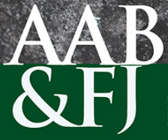Abstract
The objective of this study is to examine whether the available data on individual hedge funds (HFs) and funds-of-hedge funds (FOHFs) can reveal the risk-return trade-off and, if so, to find an appropriate risk measure that captures the cross-sectional variation in HF and FOHF returns and compare the risk-return relationship in HFs and FOHFs. Using the “live funds” and the “dead funds” datasets provided by Hedge Fund Research Inc. (HFR), we concentrate on alternative risk measures such as semi-deviation, VaR, expected shortfall and tail risk and compare them with standard deviation in terms of their ability to describe the cross-sectional variation in expected returns of HFs and FOHFs. Firstly, the risk measures are analysed at the portfolio level of HFs and FOHFs by adopting the Fama and French (1992) approach. Secondly, the various estimated risk measures are compared at the individual HF and FOHF levels by using univariate and multivariate cross-sectional regressions. The results show that the available data on HFs and FOHFs exhibits different risk-return trade-offs. The Cornish-Fisher expected shortfall or Cornish-Fisher tail risk could be an appropriate risk measure for HF return. Although appropriate alternative risk measures for the HFs are found, it is difficult to determine the risk measures that best capture the cross-sectional variation in FOHF returns.
Keywords: Hedge funds, funds-of-hedge funds, VaR, expected shortfall, tail risk
How to Cite:
Lee, H., (2012) “Risk and Return in Hedge Funds and Funds-of-Hedge Funds: A Cross-Sectional Approach”, Australasian Accounting, Business and Finance Journal 6(3), 43-64. doi: https://doi.org/10.14453/aabfj.v6i3.4
Downloads:
Download PDF
349 Views
1721 Downloads

